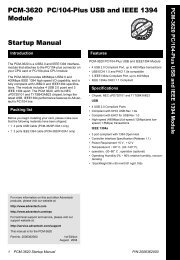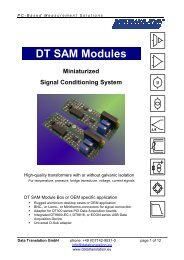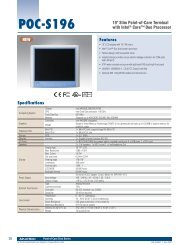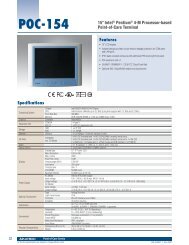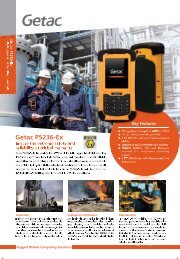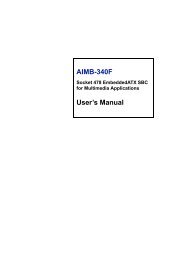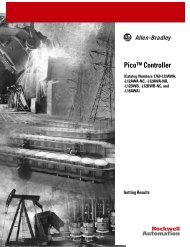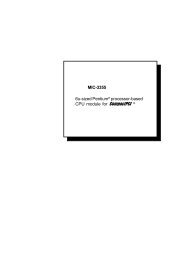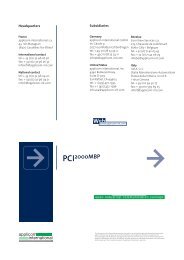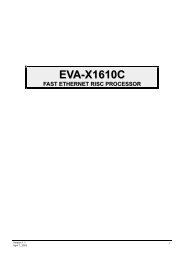1747-6.22, Backup Scanner User Manual
1747-6.22, Backup Scanner User Manual
1747-6.22, Backup Scanner User Manual
Create successful ePaper yourself
Turn your PDF publications into a flip-book with our unique Google optimized e-Paper software.
Physical and Logical RIO Link Specifications<br />
Overview 1-25<br />
The maximum number of adapters with which your scanner can<br />
communicate is determined by the scanner’s and adapter’s physical<br />
and logical specifications, as described below:<br />
• Physical Specifications are the maximum number of adapters<br />
that can be connected to the scanner. For more information, see<br />
Extended Node Capability below.<br />
• Logical Specifications for the scanner are the maximum number<br />
of logical racks the scanner can address, how the logical racks<br />
can be assigned, and whether the scanner can perform block<br />
transfers.<br />
Extended Node Capability<br />
Extended node functionality allows you to connect up to 32 physical<br />
devices on an RIO link. You must use 82 Ohm termination resistors in<br />
an extended node configuration. You can only use extended node if<br />
all RIO link devices have extended node capability. (Refer to the<br />
Compatible Devices table at the end of this chapter, or to the<br />
specifications of your device.) The <strong>1747</strong>-BSN <strong>Scanner</strong> has extended<br />
node capability. However, the smallest logical rack division is 1/4<br />
logical rack and the scanner image size is 4 logical racks. Therefore,<br />
the scanner is limited to 16 devices unless complementary I/O is used.<br />
Refer to the following section for more information on<br />
complementary I/O.<br />
Complementary I/O<br />
Complementary I/O is very useful when portions of your input and<br />
output images are unused because it allows the images of two<br />
adapters to overlap each other in the scanner’s I/O image. To use<br />
complementary I/O, the I/O image from one adapter must be the<br />
mirror (complement) of the other. This means that if there is an input<br />
module in the primary chassis, there must be an output module in the<br />
same slot of the complementary chassis. This enables total use of the<br />
scanner’s 32 input and 32 output word image for I/O addressing of up<br />
to 1024 discrete points.<br />
!<br />
ATTENTION: Because the primary and<br />
complementary chassis images overlap, input and<br />
specialty combination I/O modules must never share<br />
the same image location. Inputs received by the scanner<br />
may be incorrect and RIO block transfers will not be<br />
serviced properly.<br />
If an output module shares its output image with another output<br />
module, both output modules receive the same output information.<br />
Publication <strong>1747</strong>-<strong>6.22</strong>




